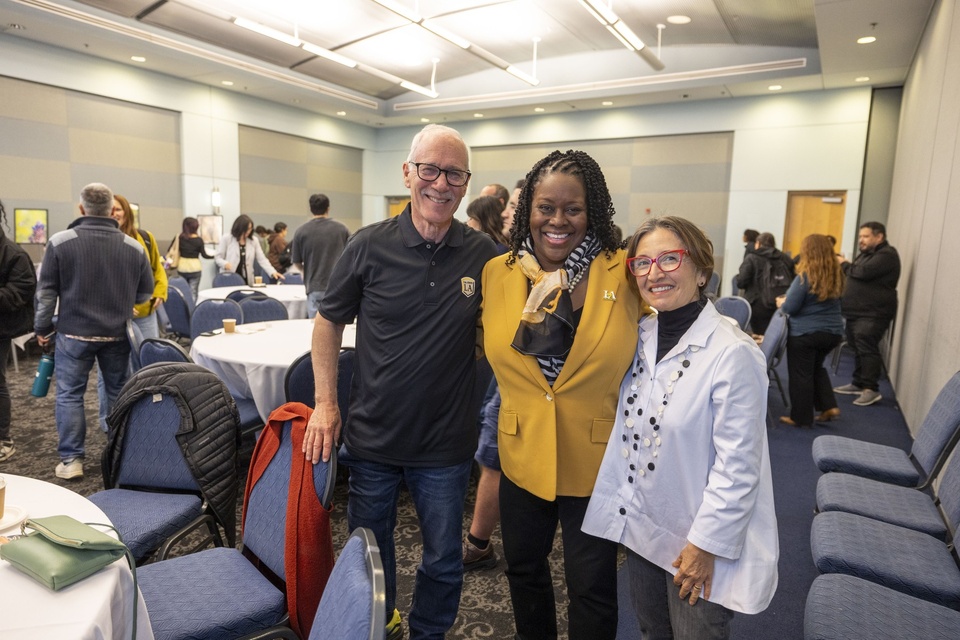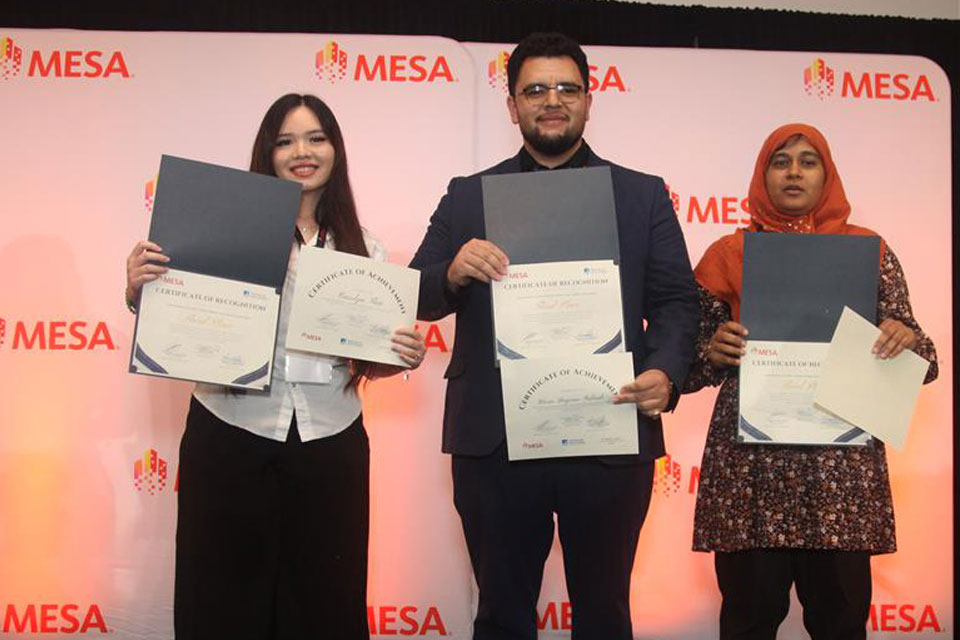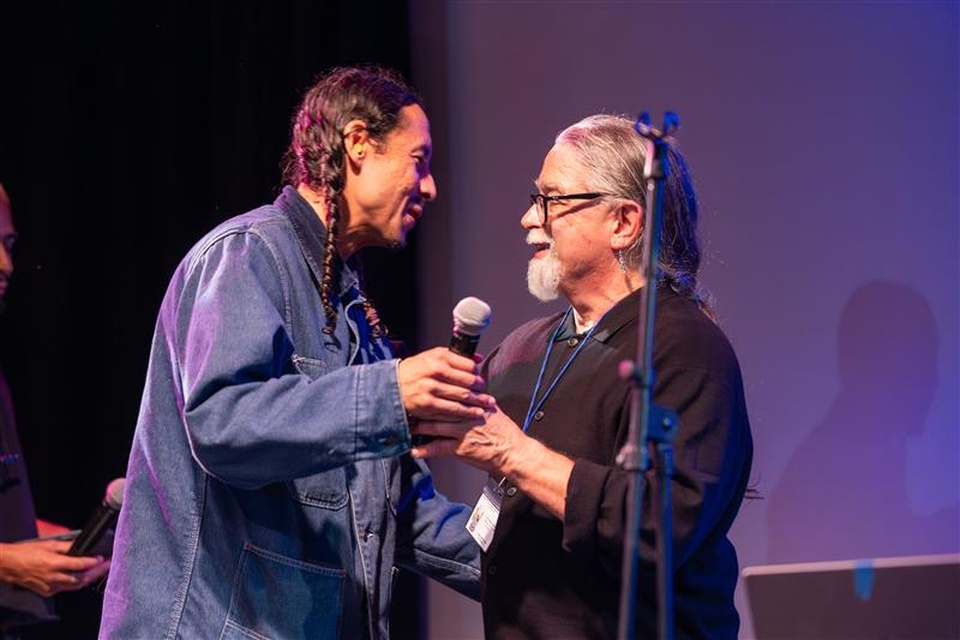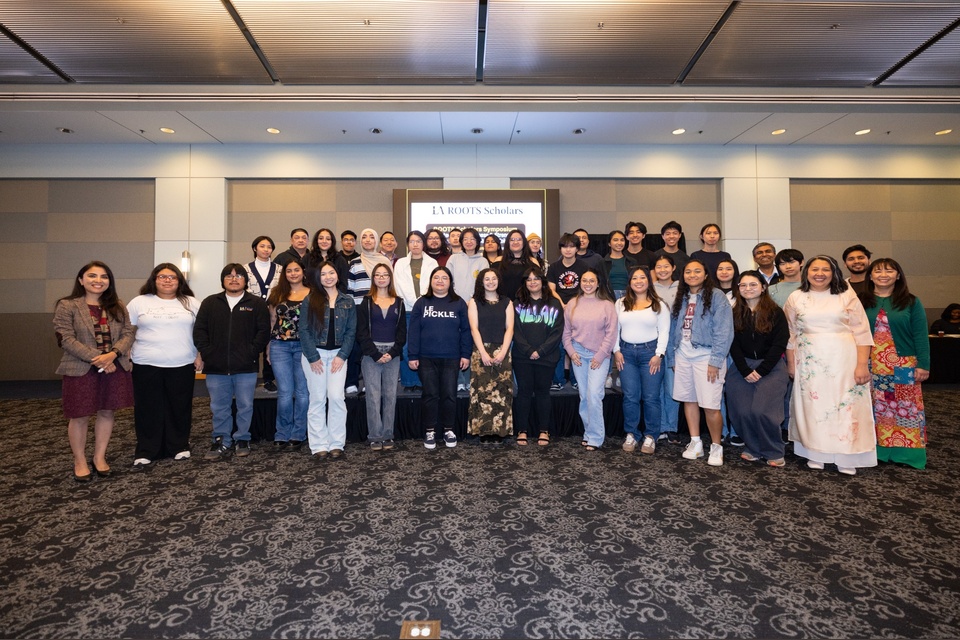Pay attention to birds. Their mere presence speaks volumes as to how healthy our surroundings are, according to Eric Wood.
“Birds tell us what’s going on,” said the Cal State LA associate professor of avian and urban ecology. “If you’re in a regional park, in a natural area, you’re going to hear native birds because there are native plants there that they’ve co-evolved with for a long time. They’re telling us, this is a good habitat, we’re going to live here. If you’re trying to promote development in a city that’s going to benefit people, you don’t look at mountain lions and other mammals. You focus on birds because they are indicators as to what we’re doing is right for biodiversity.”
Wood will conduct a bird tour of Cal State LA as part of the Pérez-Silverman Symposium: Promoting Urban Ecology, a two-day event dedicated to biodiversity, conservation, and ecological resilience in urban environments.
Named for benefactors and Cal State LA alumni Amelia Pérez-Silverman and Jeff Silverman, the symposium will be held from Tuesday, April 15, to Wednesday, April 16, and will also feature an oak tree-planting session, a seed-harvesting workshop, and a “Birds and Seeds” panel that will explore the connections between urban wildlife, native plants, and environmental resilience.
The symposium was organized by the university’s Urban Ecology Center, which endeavors to bring together researchers, students, and members of educational and community organizations to address the most critical environmental needs of Los Angeles.
“We have this amazing biodiversity on this campus,” said Wood, who is also co-director of the Urban Ecology Center. “One of our main goals is to green the heck out of this campus. We want to showcase what we’re doing and draw the interest of our students.”
Wood, with the assistance of three of his graduate students, will kick off the symposium with a 7 a.m. bird tour on April 15. The tour will highlight the urban ecology research by Wood and his students.
“In my lab we study the interaction between wildlife and the urban environment,” he said. “We focus on birds, of course. We think about how birds live in the city, the barriers they face, and how we can promote development in the city that’s going to support both biodiversity and the people. We don’t believe we can have a healthy, functioning city if it’s just for people. There has to be a balance.”
Wood anticipates introducing tour participants to about 30 species, including synanthropes, or “urban birds” closely affiliated with people, such as parrots, rock pigeons, house sparrows, and European starlings. The campus is also home to a famous pair of peregrine falcons that nest atop the old Administration Building, as well as other native birds like red-tailed hawks, Northern mockingbirds, house finches, and Allen’s hummingbirds.
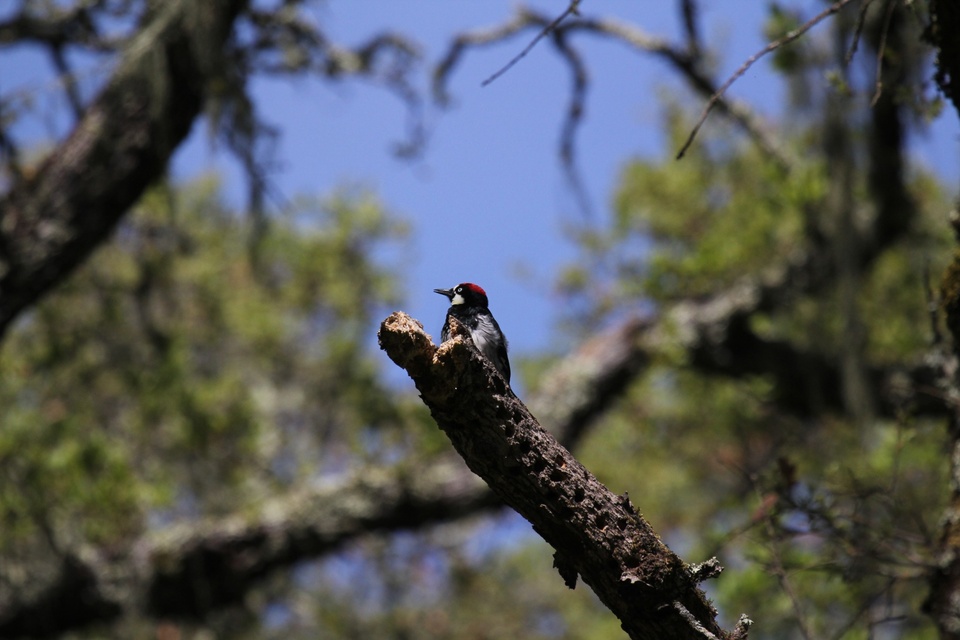
So what do these species tell us about the campus?
“They tell us right now that we’re a little too urban,” said Wood, “that we’re in a prime location in these hills and if we green, we are going to be a mecca for biodiversity in East LA.”
That greening process has already begun, with Cal State LA planting 2,000 native trees and plants in recent years through a grant from CAL FIRE. As those oak trees and other vegetation mature, Wood expects Cal State LA’s bird population to trend more native, with acorn woodpeckers, scrub-jays, and band-tailed pigeons relocating from surrounding green spaces to take up residence on campus.
“Oaks are the dominant plant species for supporting wildlife,” he said. “They produce acorns that scrub-jays and woodpeckers love to consume. During the spring, they host a huge diversity and abundance of insects, which birds like to eat as well. They also provide places for birds to nest. So, in 10 years I’m hoping the population of these acorn-loving birds will expand.”
Graduate student Harnawaz Boparai has been surveying the university’s bird population for the past year and a half. He counts birds from 20 different fixed locations on campus, starting a project that will be completed long after he graduates in May.
“He was interested in what the bird community is like now and what happens when you plant 2,000 native plants,” Wood said. “Is there going to be a change? Are we going to notice it, or is it going to be a gradual change over time? He’s put a system in place where we can document the birds.”
Following the bird tour, the “Birds and Seeds” discussion will explore the intricate connections between urban wildlife, native plants, and environmental resilience. The panel will include Wood; Kirsten Fisher, Cal State LA professor of biology and department chair; Eric Strauss, executive director of Loyola Marymount’s Center for Urban Resilience (CURes); and Lisa Fimiania, the Drollinger Environmental Leadership Fellow at CURes. The session will also feature a visual perspective on Los Angeles’ diverse ecology through an art exhibit of Silverman’s photographs of birds and insects.
For the seed-harvesting workshop, Antonio Sanchez of Artemisia Nursery in Los Angeles will teach the art of identifying, cleaning, sowing, and germinating native plants of Southern California. The interactive session will provide practical skills for restoring native habitats and fostering ecological resilience in urban spaces.
The symposium concludes on the second day with a tree planting by North East Trees, Inc. Attendees will have the opportunity to help plant an Engelmann Oak Tree at the southeast corner of the University Library and scatter native seeds to enhance campus diversity.
SCHEDULE OF EVENTS
Tuesday, April 15
- Bird Tour on Campus, meet at the Golden Eagle Statue, Main Walkway by the University Library, 7-8:30 a.m.
- “Birds and Seeds” discussion, Golden Eagle Ballroom, 9:30-11:30 a.m.
- Seed Harvesting Workshop, Janice Cordova Garden of Well-Being, by the Main Walkway, across from Lot 4, 1-2:30 p.m.
Wednesday, April 16
- From Seeds to Trees tree-planting, southeast corner of the University Library, 9:30-11:30 a.m.
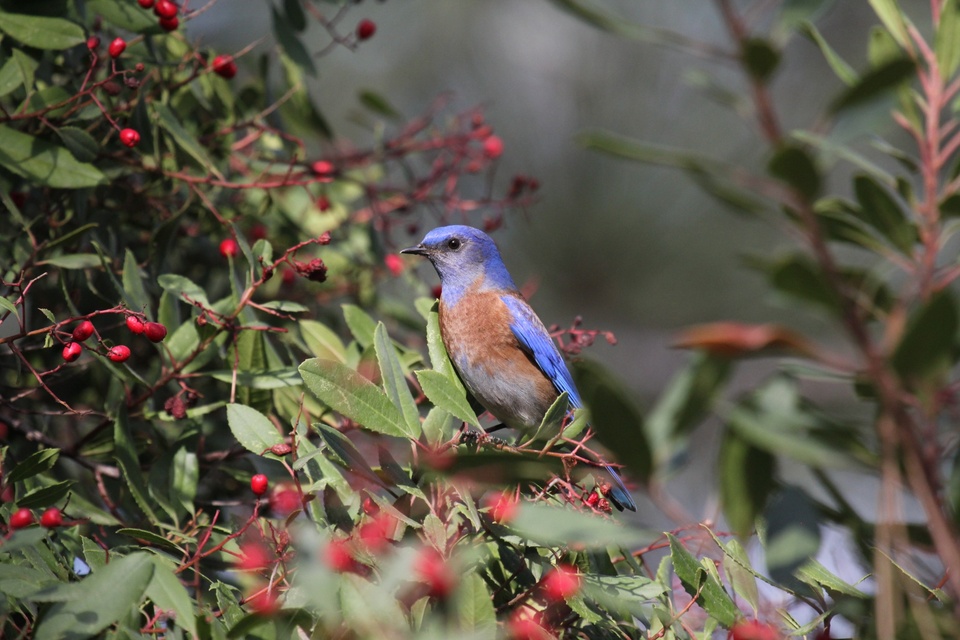
Photo: The western bluebird are among the birds that call Cal State LA home. (Credit: Eric Wood)
# # #
California State University, Los Angeles is the premier comprehensive public university in the heart of Los Angeles. Cal State LA is ranked number one in the United States for the upward mobility of its students. Cal State LA is dedicated to engagement, service, and the public good, offering nationally recognized programs in science, the arts, business, criminal justice, engineering, nursing, education, and the humanities. Founded in 1947, the University serves more than 24,000 students and has more than 250,000 distinguished alumni.

